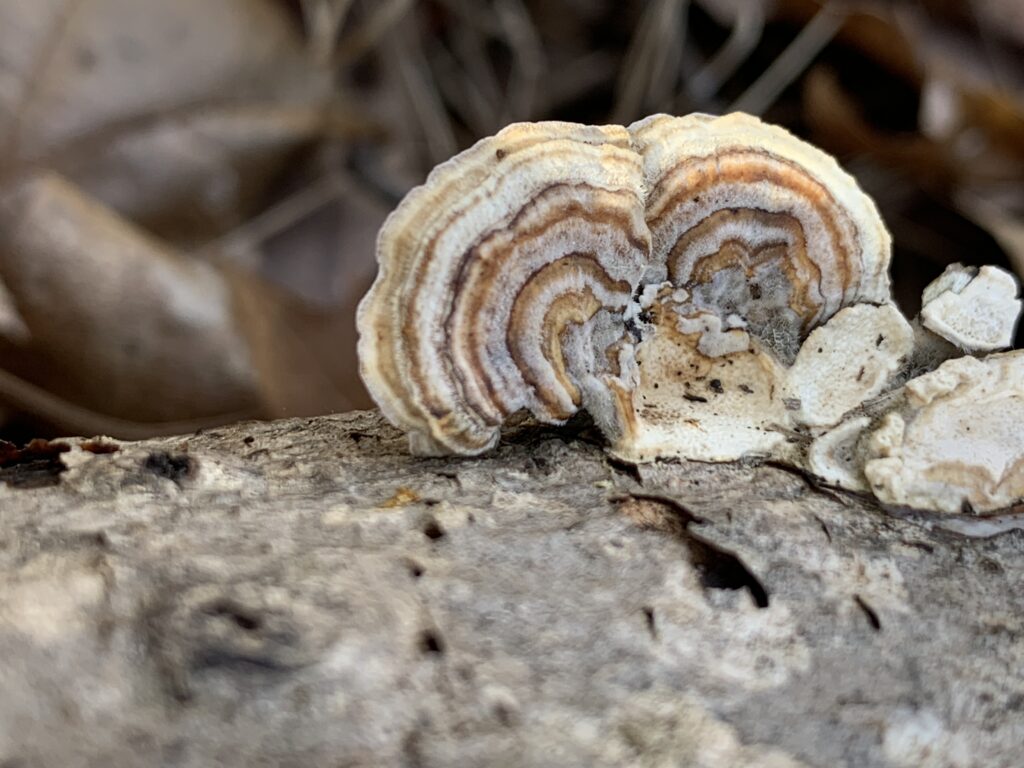| Ecology & Habitat | Saprotrophic, Growing in rows of densely packed shelves, or rosettes. Just about everywhere in the forest, or where dead wood can be found, log piles, etc. Predominantly on hardwood, but sometimes on conifer as well. |
| Edibility, Taste & Odor | Inedible/leathery. Potentially medicinal. |
| Cap | Small wavy edged fans, Strongly zonate, showing well defined bands of color. Colors ranging from blue gray to reddish brown. No notable bruising, Finely hairy or velvety Leading edge or margin is typically white when actively growing. White Leathery Flesh. |
| Pores | White Pore Surface, sometimes staining brown, or tanning with age. |
| Spores | White |

Commonly known as the turkey tail mushroom, this is a very common, and very beautiful fungus. It can be found growing on dead trees and logs throughout North America. This species is easily recognizable by its fan-shaped fruiting bodies that display a range of colors, including shades of brown, gray, and green, or reddish brown, with distinct bands of alternating colors. The coloring of the cap is varies greatly and is always strongly banded. The upper surface of the fruiting body is finely velvety or smoothly fuzzy, while the underside is bright white in fresh specimens, and covered in tiny pores from which the reproductive spores are released. One of the most striking features of Trametes versicolor is its ability to display a wide range of colors and pattern. There are several other mushrooms that look similar, but they banding on those mushrooms are usually only shades of brown or beige, and will not display such color variety in the banding. Overall they can be quite stunning visually and I often times cannot stop myself from photographing them when I some in the wild.






















